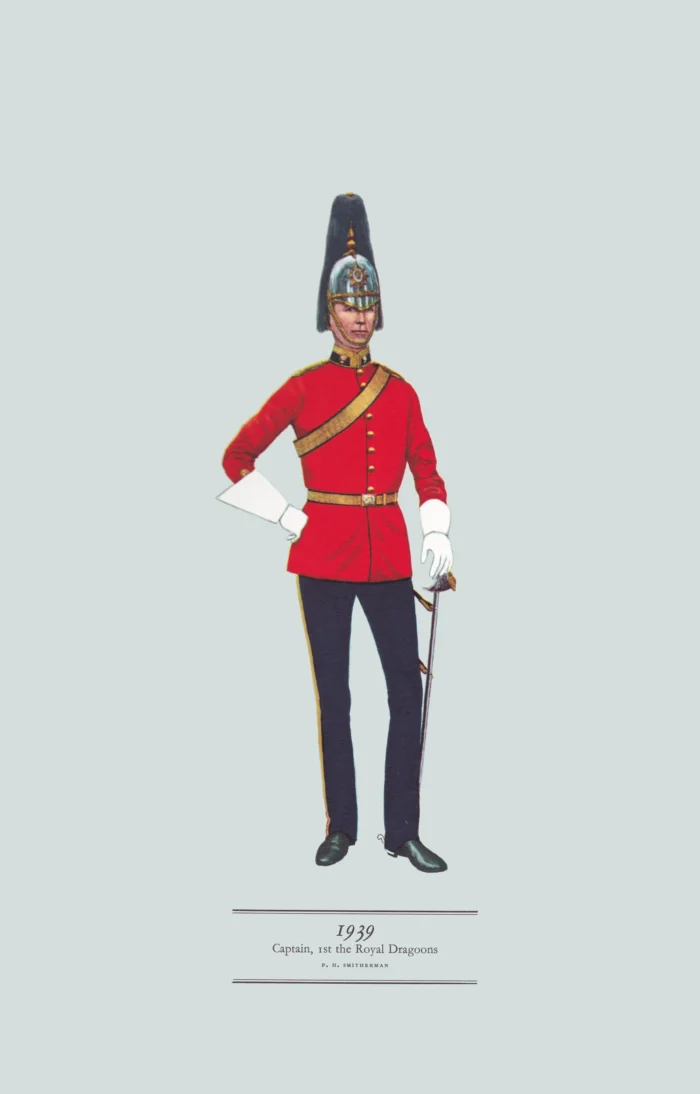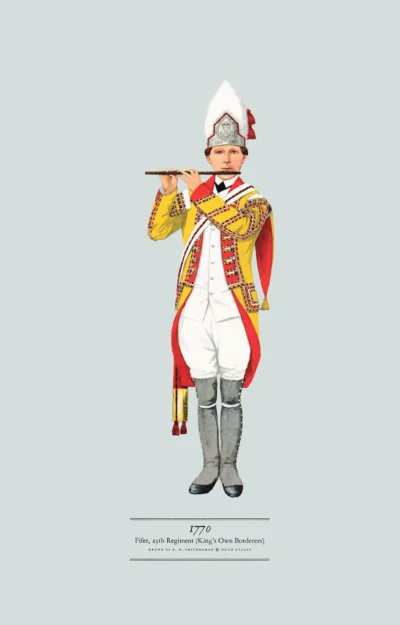Captain, 1st the Royal Dragoons, 1939 (Blues and Royals)
Raised 1661: from 1921 1st The Royal Dragoons; from 1969 Blues and Royals – RHGD (scroll down for a more detailed Description)
Published 1962 by © Hugh Evelyn Limited; drawn by Colonel Philip Henry Smitherman (1910-1982), Royal Corps of Signals
Size: c. 24 x 37cm [9 ½ ″ x 14 ½ ″] (may vary slightly from printers’ cut 50 years ago)
Printed on on medium cardstock weighing 144 g/sm2 faced in light greyish blue (RGB c. d5dede)
Print is STANDARD size – shipping is the same for 1 to 10 prints (based on largest print size in your order) – see Shipping & Returns
Description
The Royals were raised in 1661 as the Tangier Horse to form part of the garrison of Tangier, which the consort of King Charles II had brought as a dowry. A mounted infantry and later a heavy cavalry regiment of the British Army, it became the Royal Regiment of Dragoons in 1684, in 1751 the 1st (Royal) Regiment of Dragoons. It served for three centuries and was in action during both World Wars. Amalgamated with the Royal Horse Guards to form The Blues and Royals in 1969, it is the second-most senior regiment in the British Army. Here is the uniform that emerged for Dragoon Guards and Dragoons when dress regulations were re-written after Crimea. The first helmet produced had more ornamentation but was otherwise the same. Dragoon Guards wore a gilt helmet and Dragoons a silver one (shown here) with gilt ornaments. Each regiment had a distinctive horsehair plume. The ornament on the cuff, hidden by the gauntlet, is an Austrian knot, like that of the 10th Hussar’s, without the ‘eyes’ and with an additional small twist. Up to 1914 a more elaborate Austrian knot had been worn but was simplified when full dress was re-introduced for levees and other similar functions after the First World War. The collar badge, which had never been worn before, was then added. It is an eagle with ‘105’ beneath, commemorating the eagle of the French 105th Regiment which the Royals captured at Waterloo; because of which they shared with the Greys the nick-name of the ‘Birdcatchers’. The capture of enemy standards was a regimental habit, as they had acquired that of the Black Musketeers of France at Dettingen in 1743.
Additional information
| Weight | 0.0123 kg |
|---|---|
| Dimensions | 23 × 37 cm |




